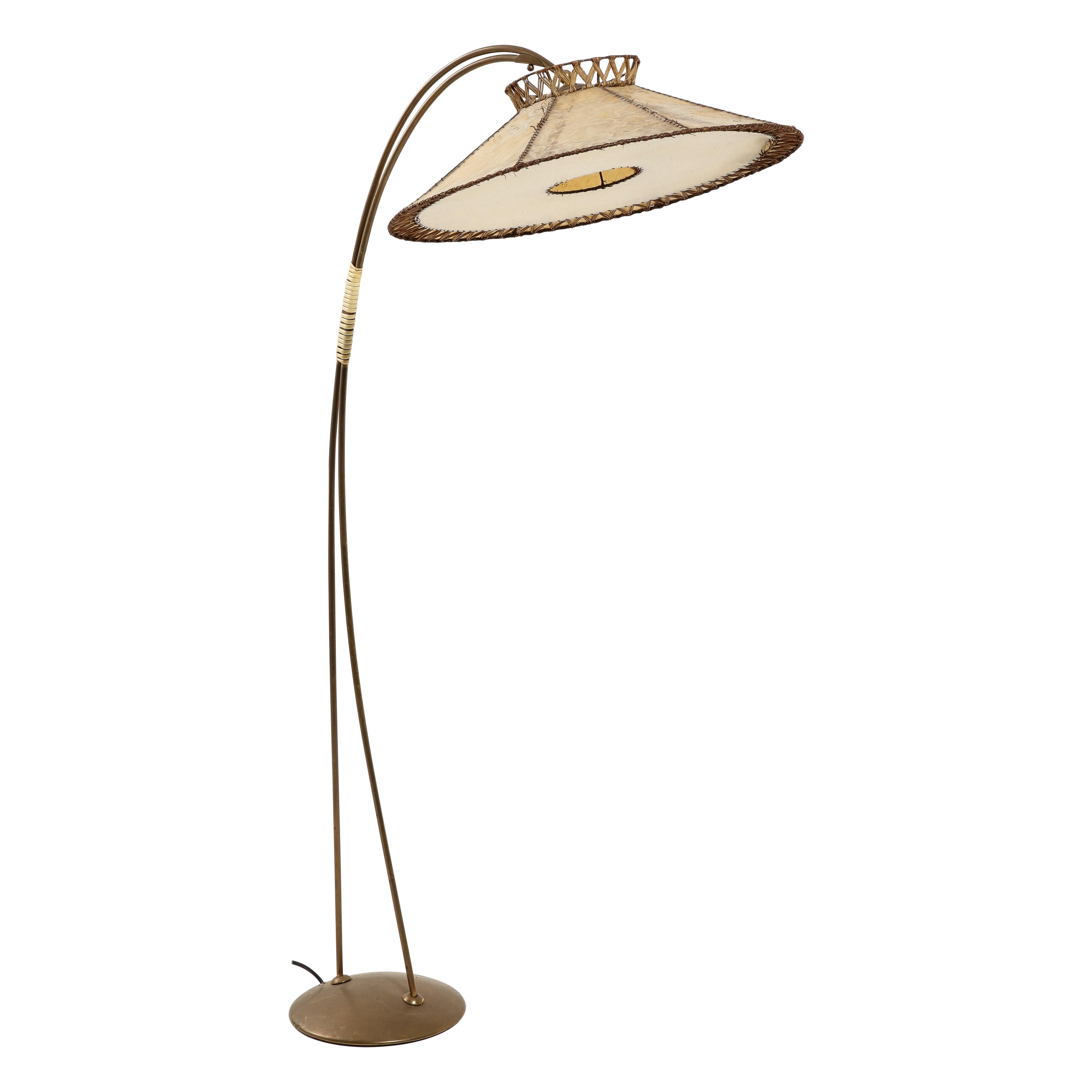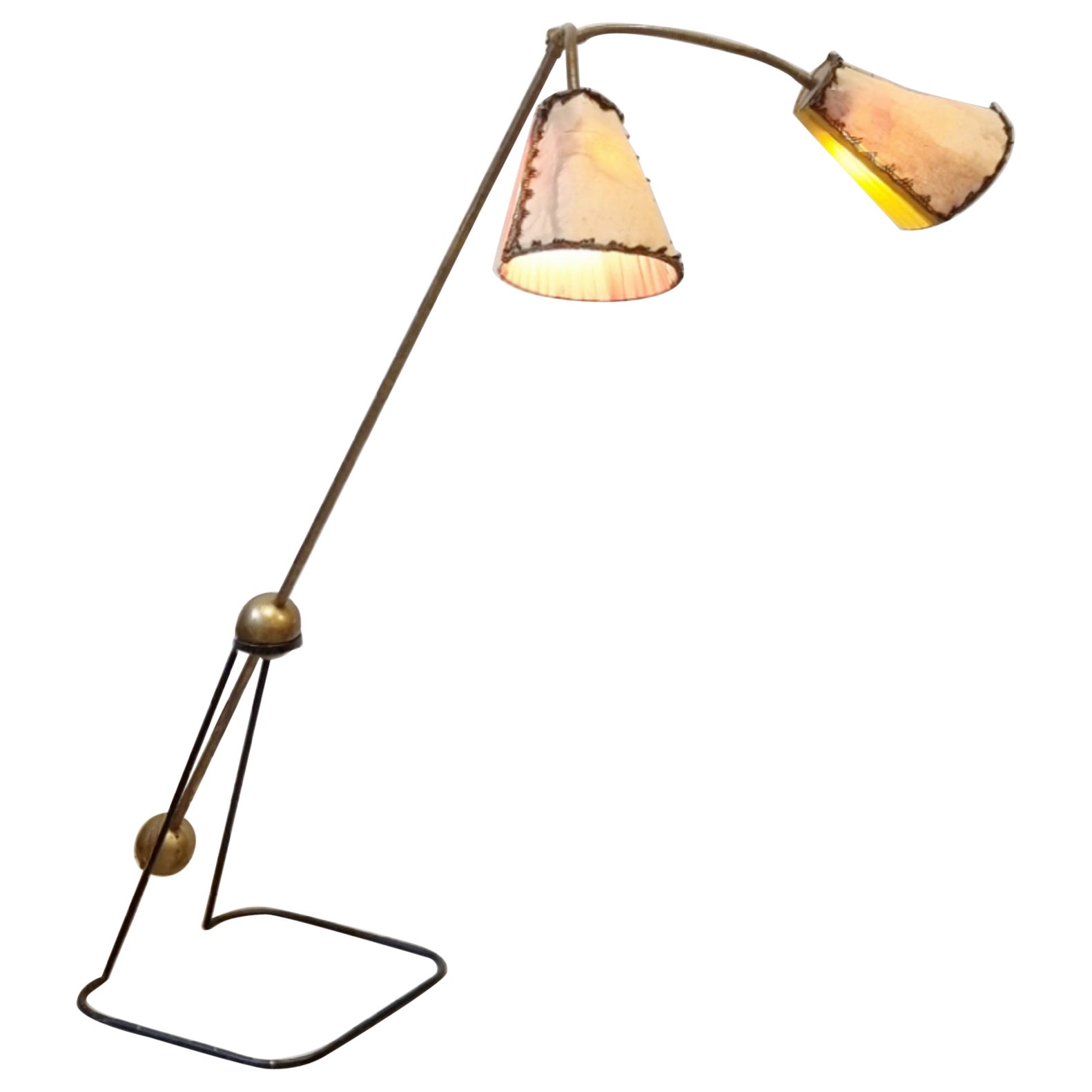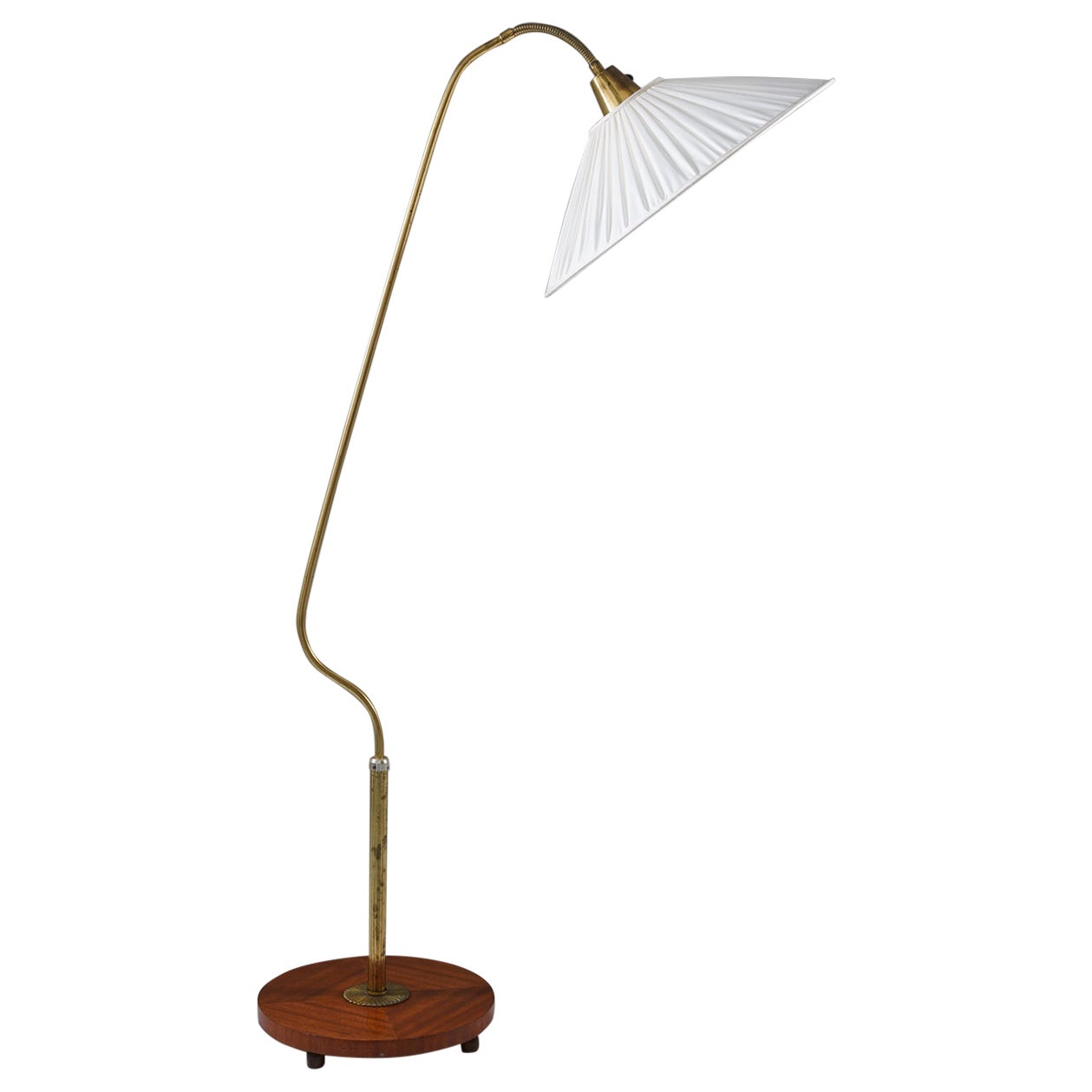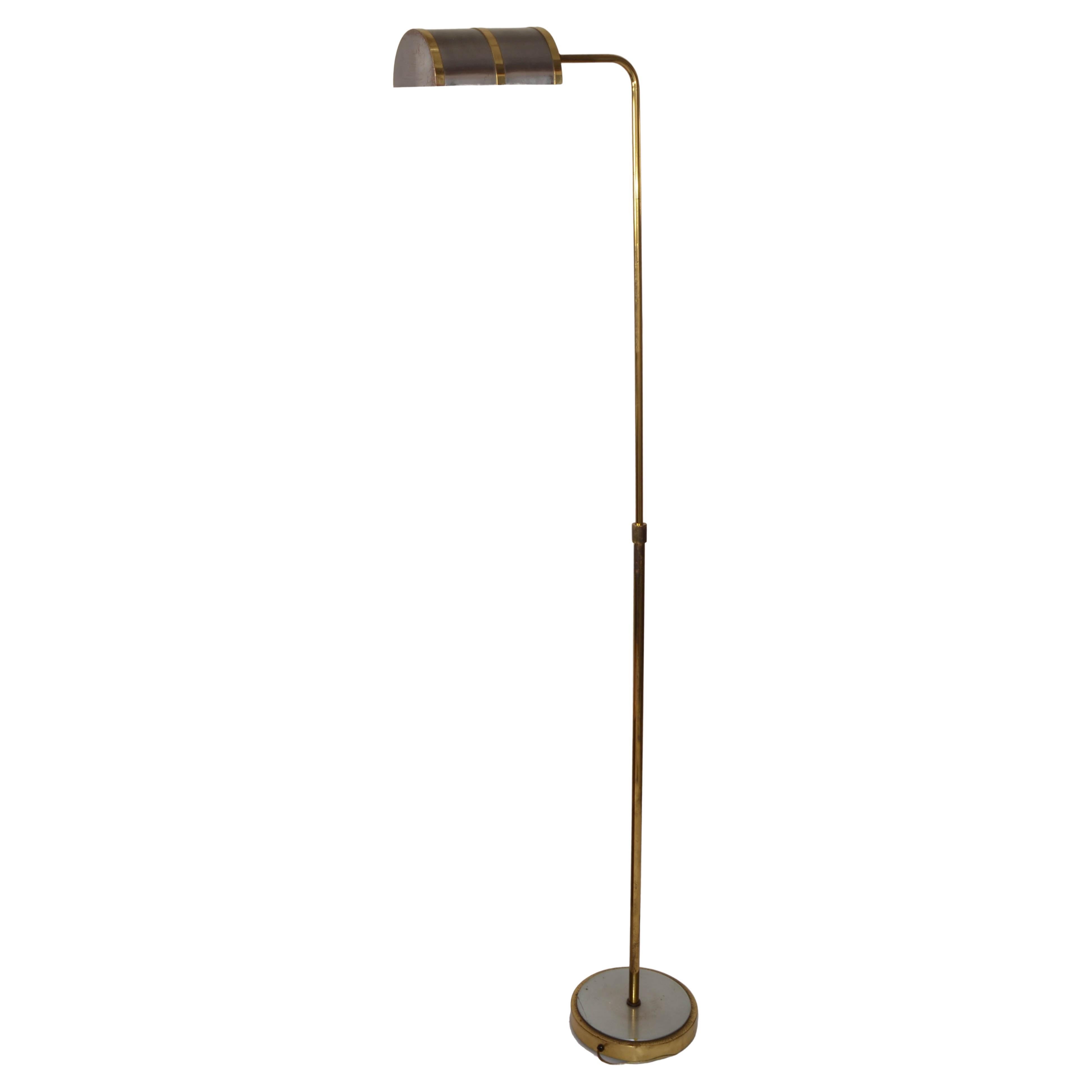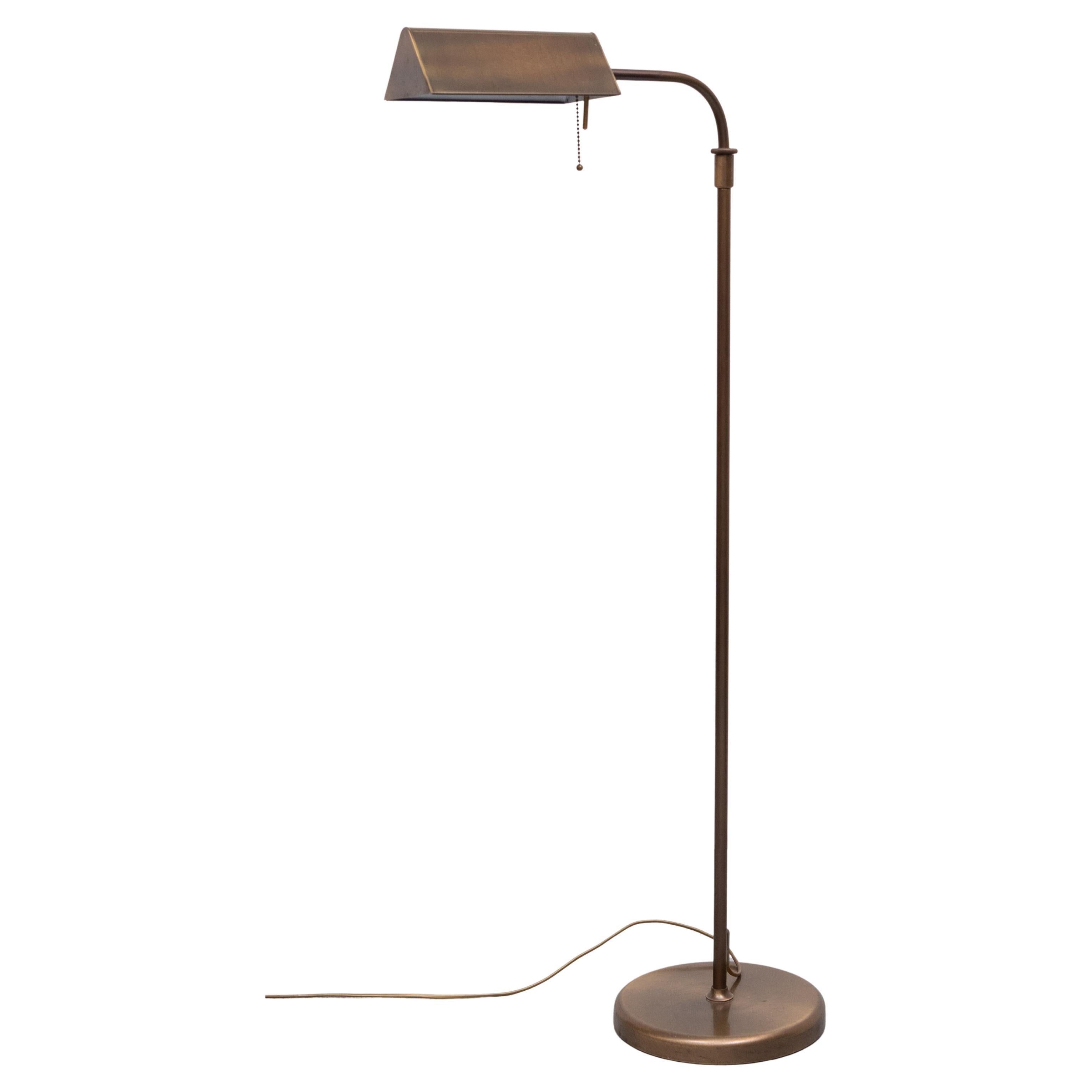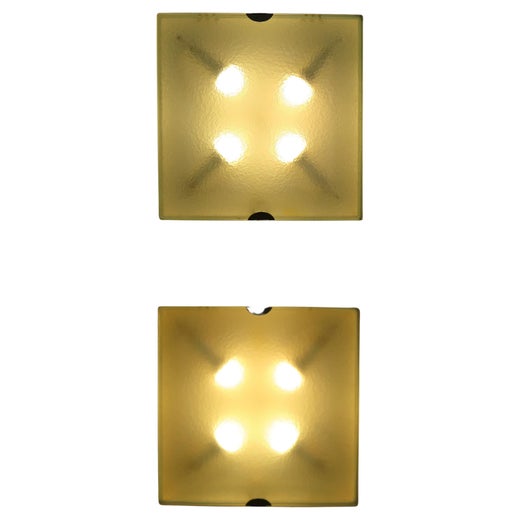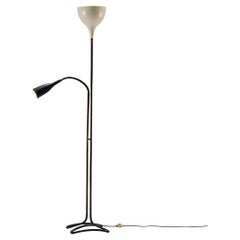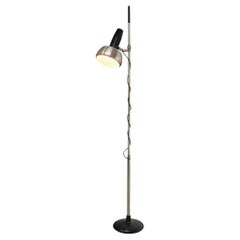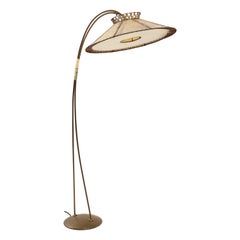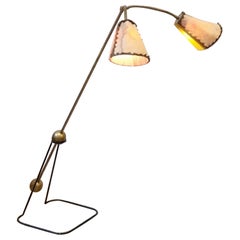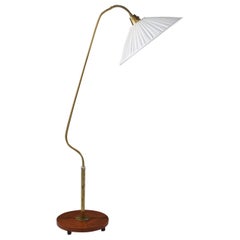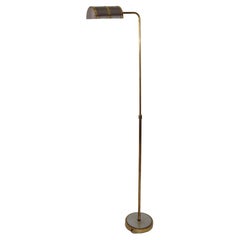Fontana Arte Floor Lamp in Patinated Brass and Glass
About the Item
- Creator:Fontana Arte (Manufacturer)
- Dimensions:Height: 61.03 in (155 cm)Width: 13 in (33 cm)Depth: 29.53 in (75 cm)
- Style:Mid-Century Modern (Of the Period)
- Materials and Techniques:
- Place of Origin:
- Period:
- Date of Manufacture:1960s
- Condition:Wear consistent with age and use. Every item Morentz offers is checked by our team of 30 craftspeople in our in-house workshop. Special restoration or reupholstery requests can be done. Check ‘About the item’ or ask our design specialists for detailed information on the condition.
- Seller Location:Waalwijk, NL
- Reference Number:Seller: 501112741stDibs: LU933144754422
Fontana Arte
Best known for its elegant and innovative vintage lighting fixtures, the Milan-based firm Fontana Arte pioneered one of the key features of 20th-century and contemporary Italian design: the union of artistry and industry wrought by partnerships between creative talents — chiefly architects — and entrepreneurial businesses. Fontana Arte is further distinguished by having had as artistic director, in succession, four of Italy’s most inventive modernist designers: Gio Ponti, Pietro Chiesa, French transplant Max Ingrand and Gae Aulenti.
The bread and butter of the glassmaking company that Luigi Fontana founded in 1881 was plate-glass panels for the construction industry. In 1930, Fontana met Ponti — then the artistic director of the Richard Ginori ceramics workshop and the editor of the influential magazine Domus — at a biannual design exhibition that became the precursor to today’s Milan Design Triennale, and the two hatched an idea for a furniture and housewares firm. Fontana Arte was incorporated in 1932 with Ponti as its chief of design. He contributed several lamps that remain among the company’s signature works, including the orb-atop-cone Bilia table lamp and the 0024 pendant — a stratified hanging sphere.
The following year, Fontana Arte partnered with the influential Milan studio glassmaker and retailer Pietro Chiesa, who took over as artistic director. Chiesa’s designs for lighting — as well as for tables and items including vases and ashtrays — express an appreciation for fluidity and simplicity of line, as seen in works such as his flute-shaped Luminator floor lamp and the 1932 Fontana table — an arched sheet of glass that is held in the permanent collection of the Museum of Modern Art.
Six years after Chiesa’s 1948 death, the École des Beaux Arts–trained Max Ingrand took over as head of design at Fontana Arte. Ingrand brought a similarly expressive formal sensibility to wares such as lamps and mirrors, but he also had a masterful eye for the manipulation of glass surfaces — whether they be cut, frosted, acid-etched or sand-blasted. His classic design is the Fontana table lamp of 1954, which has a truncated cone shade and curved body, both of which are made of pure, chic white-frosted glass.
Following Ingrand, the often-audacious Italian architect Gae Aulenti served as the company’s artistic director from 1979 to 1996, and while she generally insisted that furnishings take second place aesthetically to architecture, she made an exception for Fontana Arte pieces such as the Tavolo con Ruote series of glass coffee and dining tables on wheels, bold lighting pieces such as the Parola series and the Giova, a combination flower vase and table lamp. As a key incubator of modern design under Aulenti’s tenure, Fontana Arte remained true to its long-held commitment — creating objects that have never been less than daring.
Find vintage Fontana Arte lighting fixtures such as pendants, table lamps and more on 1stDibs.
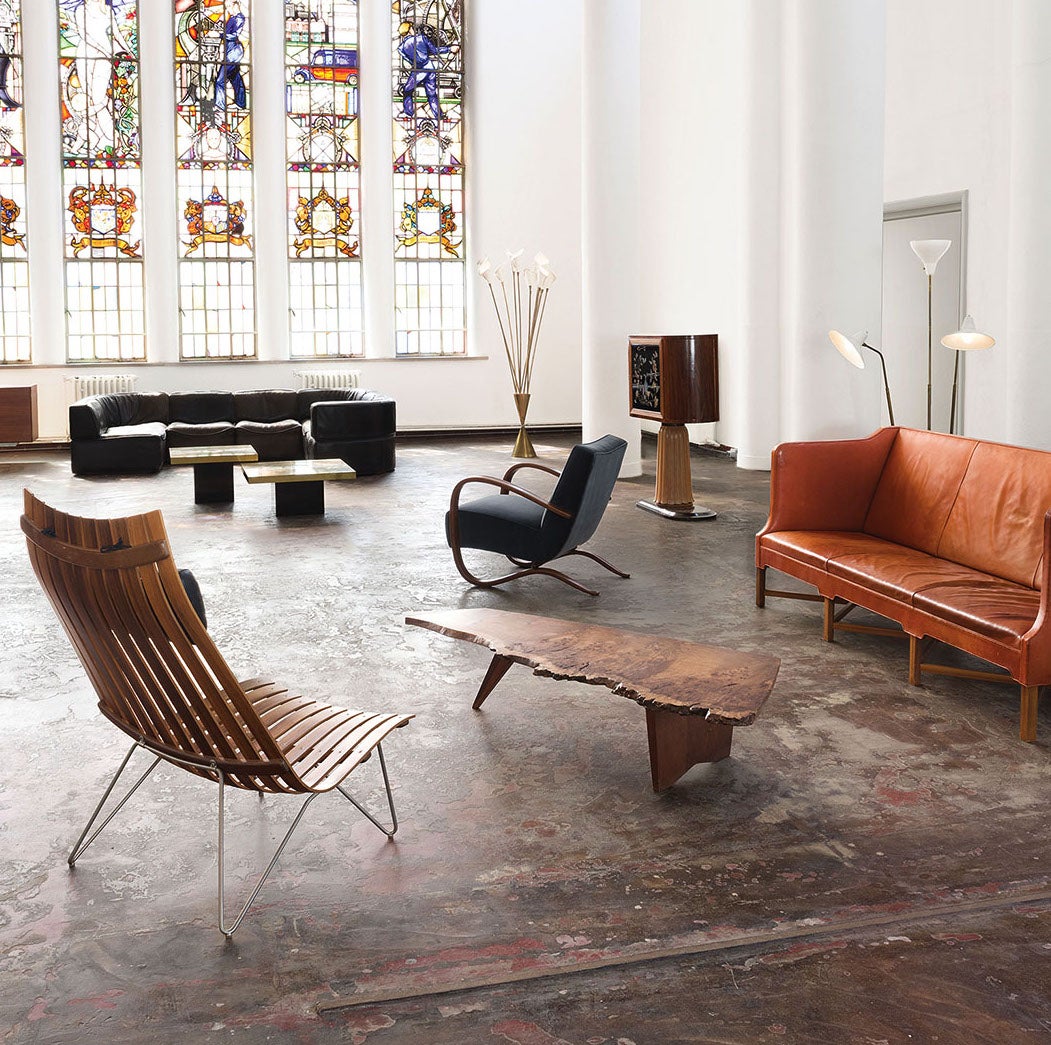
Established in 2006, Morentz has a team of approximately 55 restorers, upholsterers, interior advisers and art historians, making it a gallery, workshop and upholstery studio, all in one. Every day, a carefully selected array of 20th-century furniture arrives from all over the world at the firm’s warehouse, where the team thoroughly examines each piece to determine what, if any, work needs to be done. Whether that means new upholstery or a complete restoration, Morentz's aim is always to honor the designer’s intention while fulfilling the wishes of the client. The team is up to any challenge, from restoring a single piece to its original glory to furnishing a large-scale hotel project.
- ShippingRetrieving quote...Shipping from: Waalwijk, Netherlands
- Return Policy
More From This Seller
View AllVintage 1950s Italian Mid-Century Modern Floor Lamps
Brass, Aluminum
Vintage 1950s Finnish Scandinavian Modern Floor Lamps
Brass
Vintage 1950s Finnish Scandinavian Modern Floor Lamps
Brass
Vintage 1950s Italian Mid-Century Modern Floor Lamps
Aluminum, Chrome
Vintage 1950s Italian Mid-Century Modern Floor Lamps
Aluminum, Steel, Nickel
Vintage 1950s Italian Mid-Century Modern Floor Lamps
Marble, Aluminum, Brass
You May Also Like
Mid-20th Century Italian Mid-Century Modern Floor Lamps
Brass
Vintage 1950s Swedish Mid-Century Modern Floor Lamps
Brass, Steel
20th Century Swedish Mid-Century Modern Floor Lamps
Brass
Mid-20th Century American Mid-Century Modern Floor Lamps
Cast Stone, Brass, Steel
Vintage 1970s German Mid-Century Modern Floor Lamps
Bronze
Vintage 1950s Italian Mid-Century Modern Floor Lamps
Metal, Brass
Read More
We Took Over a Historic Milan Palazzo and Filled It with Edgy Design
With "A New Breed," we showcased exceptional pieces by rising talents, a rapidly growing area of strength among 1stdibs' many offerings.
Hans Bergström’s Monumental Chandeliers Are Made for Grand Spaces
Designed by a giant of Swedish lighting, the large-scale fixtures bring major drama.
